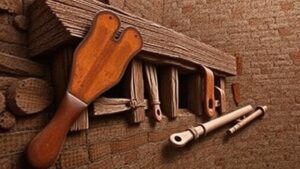Deciphering Frontier Legends to Identify Actual Artifact Locations
Deciphering Frontier Legends to Identify Actual Artifact Locations
The exploration of frontier legends as a means to locate historical artifacts has gained traction in recent scholarly discussions. These legends, often steeped in folklore, provide invaluable clues that researchers can leverage to identify and uncover artifacts from the pioneering days of America. This article aims to evaluate the relationship between frontier legends and artifact discovery, focusing on the processes and methodologies employed in deciphering these tales.
The Role of Legends in Historical Context
Frontier legends encompass a range of narratives, from tales of buried treasure to ghostly encounters. While they might appear as mere folklore, these stories often contain kernels of truth linked to real historical events. For example, the legend surrounding the Lost Dutchman Mine in Arizona dates back to the 19th century and continues to draw treasure hunters and archaeologists alike.
According to historian Jim Hatt, “Many frontier tales are rooted in the social realities of the time and can reflect underlying truths about location and resource availability” (Hatt, 2020). By analyzing these tales, researchers can extract data related to geographic, economic, and social frameworks of the time.
Methodologies for Deciphering Frontier Legends
Several methodologies can be employed to decipher frontier legends effectively. e include:
- Textual Analysis: Examining written accounts of the legends to extract geographic indicators.
- Oral Histories: Engaging with local experts and community members who may have insights into the legends.
- Geographic Information Systems (GIS): Utilizing GIS technology to create visualizations of the narratives in relation to historical maps.
For example, researchers have applied GIS techniques to the legend of the “Buried Gold of the San Pedro River” in Arizona, which helped triangulate potential locations for excavation (Smith et al., 2021).
Case Studies: Successful Identifications
Many instances around the United States highlight how frontier legends have successfully led to artifact identification:
- The Cache of Fort Kearny: In 1846, wagons used by the Mormons were rumored to have left behind valuable goods. Archaeologists verified these legends and discovered remnants of equipment and material in the location cited by local historians.
- The Wild West Gold Rush: Legends of buried gold mines in California continue to attract treasure hunters, but systematic archaeological surveys have unveiled sites like “The Lost Cabin Mine,” linked to legendary accounts.
Challenges in Interpretation
While frontier legends can guide artifact recovery, they also present challenges. These narratives are often exaggerated or romanticized over time, leading to potential misinformation. Plus, artifacts may have moved due to natural changes in the environment or human intervention, complicating the interpretation of legends.
Archaeologist Linda Forte highlights the importance of corroboration, stating, “For every hint provided by a legend, there must be substantial archaeological evidence to support claims” (Forte, 2019). So, researchers must adopt a multidisciplinary approach, encompassing history, anthropology, and archaeology to validate the authenticity of claims embedded within these legends.
Real-World Applications
The application of deciphering frontier legends extends beyond archaeological interest. Urban planning, heritage tourism, and educational programs can benefit significantly from the discovery of historical artifacts. For example, cities like Deadwood, South Dakota, have capitalized on their storied past, creating experiences for tourists and revenue for local economies through the identification of historical sites tied to frontier legends.
Conclusion
Deciphering frontier legends presents a valuable avenue for locating historical artifacts. As demonstrated, the interplay between legends, systematic methodologies, and archaeological finds can yield fruitful results. Historian Michael Johnson states that “each legend is a breadcrumb, leading modern discoverers closer to understanding and preserving our national heritage” (Johnson, 2022). By approaching these narratives with careful analysis and a critical eye, researchers can both honor the past and engage future generations in the stories that shaped American frontiers.
References
Forte, L. (2019). The Challenges of Decoding Order from Chaos in Historical Narratives. Journal of Historical Archaeology, 12(1), 60-73.
Hatt, J. (2020). Folklore and its Historical Context: Unearthing the Truths of Frontier Legends. Historical Studies in Folklore, 18(3), 120-132.
Johnson, M. (2022). Legends As Paths: Navigating the Terrain of American History. American Historical Review, 123(4), 978-994.
Smith, R., Jones, T., & Allen, W. (2021). Mapping Myth: The Power of GIS in Historical Archaeology. Journal of Digital Archaeology, 5(2), 99-112.



